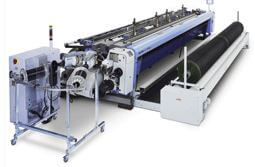FREE Standard Shipping On All Orders $100 or More!*
Winter Pool Cover Quality Differences
Winter pool covers come in many different shapes, sizes, and materials to fit your needs. Depending on what you and your pool need, there's a winter pool cover for every situation. However, it's important to note that not all winter covers are created equal. The variation in size and material also means a variation in quality. In this article, we discuss the different kinds of winter pool cover material and their quality.
Winter Pool Cover Materials
Pool covers begin as plastic pellets extruded into sheets of polyethylene or polypropylene, two common industrial thermoplastics. These plastic sheets are cut into thin ribbons and then woven into a sturdy interlocking fabric.
Thread count is a term used to gauge fine suits and bed linens, and for pool covers, the terms density and denier are used to gauge the weave and weight, respectively, of the fibers that make up the fabric. You may also see the weave represented by the term "scrim," which equates to the number of fibers used in a square inch.
Polyethylene or Polypropylene?
Most pool covers are made with polyethylene, even though polypropylene is a stronger base polymer, all else being equal. But added to the base are broad-ranging additives, stabilizers and strength modifiers that improve the bond between the polymer and the filler. The density or "scrim" of a pool cover will also make a large difference in the durability of the fabric, as will the weight or denier of the fibers used to create the weave.
Laminate Coatings
After a pool cover is extruded and then woven into fabric, laminate layers are applied to both sides. These laminates can be additional sheets of non-woven polyethylene, heat sealed on both sides, or the base fabric can be dipped in an emulsified liquid, sometimes several times, to increase the strength and thickness of the material.
In addition to layers of polyethylene, UV stabilizers, fungal inhibitors and other additives are commonly used to improve durability and prevent degradation. Such chemical layers or protective films are applied as a final step in the process of making a swimming pool cover.
Grommets
Brass or aluminum? Both materials are durable for the application. Grommets are added to the edge of pool covers to allow aboveground pool owners to secure the cover to the pool by running a cable through the grommets. For in-ground pool covers, grommets are not commonly utilized but could be used with stakes and rope for added security against high winds or heavy rains.
Pool Cover Construction
Materials used in the manufacture of a pool cover are important, but as every good chemist knows, it's not what you blend together, it's how you blend that counts.

Modern factory equipment for making pool covers is completely computerized and precisely controlled. Tolerances are in the thousandths of an inch, and the process of lamination, cooling and rolling the fabric can all be handled by one machine.
Laminate Coatings
The scrim or weave of the cover and the weight or denier of the fibers that are woven together can create a very rigid fabric, with high tensile strength in all directions. The tightness of the weave can pre-determine the resistance to tears and punctures.
But the laminates, however, are what really provides the toughness that a winter pool cover needs. If you've ever had the opportunity to compare an eight-year pool cover with a 20 year pool cover, the difference in thickness is very noticeable. The fibers or ribbons used have a greater weight and thickness, and the cover has more laminated protective layers.
Seams and Stitches
Other quality variables to consider in solid pool covers include the seams and the stitching on the edges. Most manufacturers use large rolls of extruded PE fabric to require as few seams as possible. Larger pool covers will require the placement of a seam, where two sections of fabric are joined together.
Heat welded seams are standard; few manufacturers are still sewing the seams together with nylon thread, which can unravel under difficult conditions. Some pool covers may use both methods on the seam, and for the edges of the cover, the fabric is typically folded over, heat welded and stitched.
A pool cover with a sewn-on nylon strip around the edge represents an improvement, when the stitching is doubled and corners reinforced. All pool covers need extra stitching at stress points along the edge to allow for the necessary tugging and pulling that they must endure.
Winter Pool Cover Quality Differences
Winter pool cover quality differences are in the weight and the weave of the fabric and in how many and what type of laminates and additives are used. The best pool covers are very thick with many laminate layers, and a tighter weave makes them difficult to puncture or rip. The finish work on the edges is also more durable on our best winter pool covers.
Swimming pool covers are manufactured in many different grades, and at In The Swim, we work with our manufacturers to offer an entire line of affordable winter pool covers, no matter what the pool budget happens to be this year.
Now that you know the science behind swimming pool covers, you can better understand why they are more durable and affordable than ever.